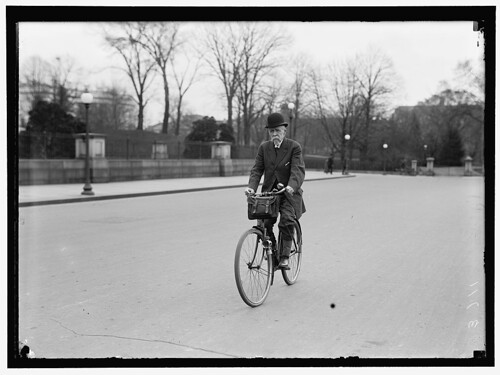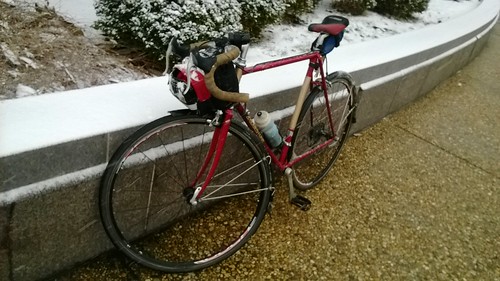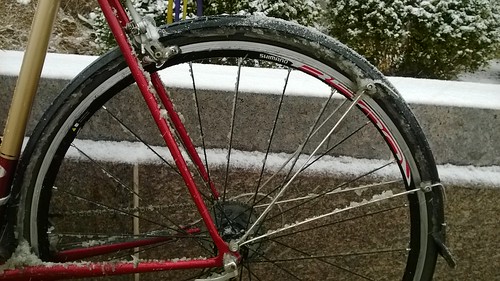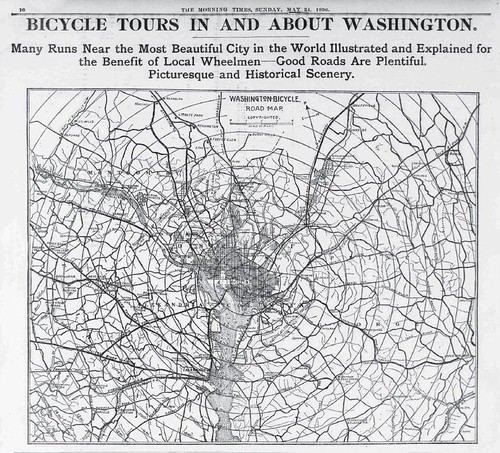 The Elite Bicycle: A Portrait of the World's Greatest Bicycles by Gerard Brown
The Elite Bicycle: A Portrait of the World's Greatest Bicycles by Gerard BrownMy rating: 3 of 5 stars
This is a coffee table book with lots of color photographs of bicycles and a fair amount of accompanying text to provide context, but I overall I was disappointed. (However since I checked this out of my public library, not terribly. I certainly wouldn't want to have spent money on this one.)
Published in the U.S. by VeloPress, this was originally published in the U.K. by another publisher. While there is some discussion of U.S. bike companies, the original audience was more European than American (or so it seems to me). And the change in the sub-title for the American edition somewhat confuses what the book is about, I think - originally it was "The Elite Bicycle: Portraits of great marques, makers and designers" and in the U.S. it is "The Elite Bicycle: A Portrait of the World's Greatest Bicycles." (Isn't the American version a tautology?)
I'm not sure the original British title is entirely consistent with the content of the book, but it is certainly more suggestive of the information in it the American one. As another person wrote, this isn't a book about bicycles so much as about bicycle parts, and there is something to that - but of course, a modern "elite bicycle" is in fact a collection of parts since there is no one company that creates both the frame+fork and then the group of parts that are bolted to that frame+fork. Also not clear from the (American) title and somewhat unexpected is the heavy emphasis on the manufacturing process rather than finished products.
I found it a little puzzling that the book doesn't present a particular kind of bicycle as this desirable "elite bicycle" clearly. This was not, as I was expecting from a book from VeloPress (not realizing that this was not their creation), oriented towards pure road racing bicycles but rather high end road bicycles for individuals who like really nice bikes but aren't going to be using them as professional cyclists. Most of the companies (those covered I have listed below) are frame builders that specialize in bespoke bicycles (i.e., built to the customer's specific requirements) but not all. And some high end bicycle parts-making companies are covered, such as Chris King and Sapim. A French family business that produces what are the world's best tubular racing tires is covered presumably because they are "the greatest" but very few of the bikes otherwise discussed would use such tires - and then, out of some sense of fairness perhaps, there is a description of Continental's tubular tire manufacturing process, too (which is in Europe, unlike most European company bicycle tires that are now made in Thailand or Taiwan, such as Michelin).
Probably the greatest shortcoming of the American title is that it suggests that the authors consider these particular bikes (and parts) to be the world's greatest. The British title is more clear that this is just about some examples of elite bicycles and not "the list." The book is very clearly (upon reading) intended as a sampling of the various ways such elite bikes are produced and not a collection of the very best.
The foreward by Sir Paul Smith sets a new standard in brevity. But they did get to put his name on cover. So there.
The Library of Congress catalog record for this book includes a list of the companies covered: Brooks -- Selle Italia -- Reynolds -- Columbus -- Cinelli -- Guru -- Chas Roberts -- Rourke -- Cyfac -- Alex Singer -- Fagg in -- Pegoretti -- Independent fabrication -- Richard Sachs -- Ben Serotta -- Condor/Paris -- Seven -- Dinucci -- Ira Ryan -- Tony Pereira -- Winter -- Spécialités TA -- Sapim -- Chris King -- Royce -- Mavic -- FMB -- Continental -- Time -- Contacts.
View all my reviews of cycling books.







